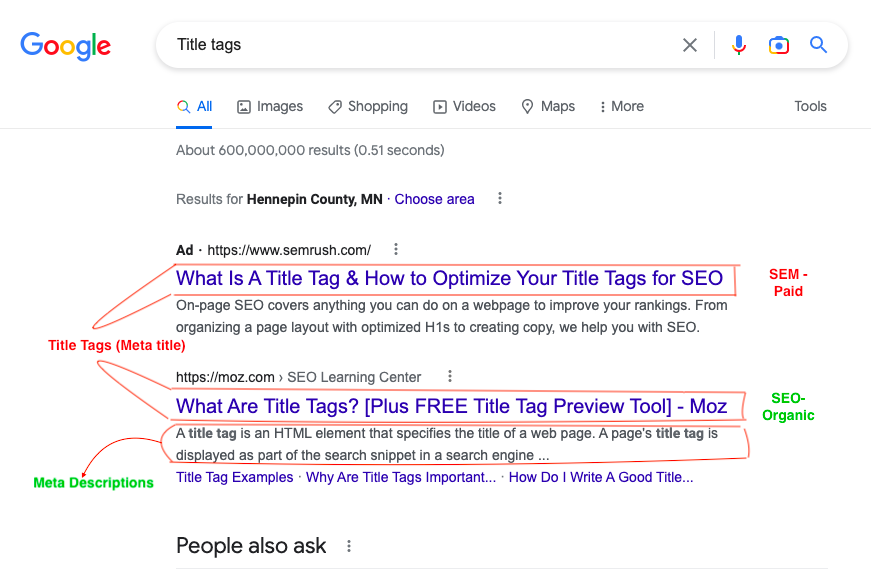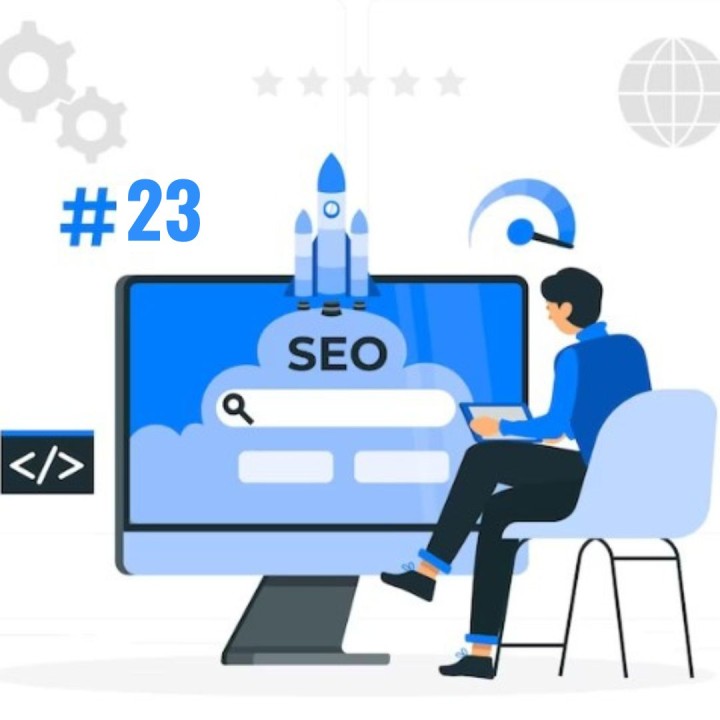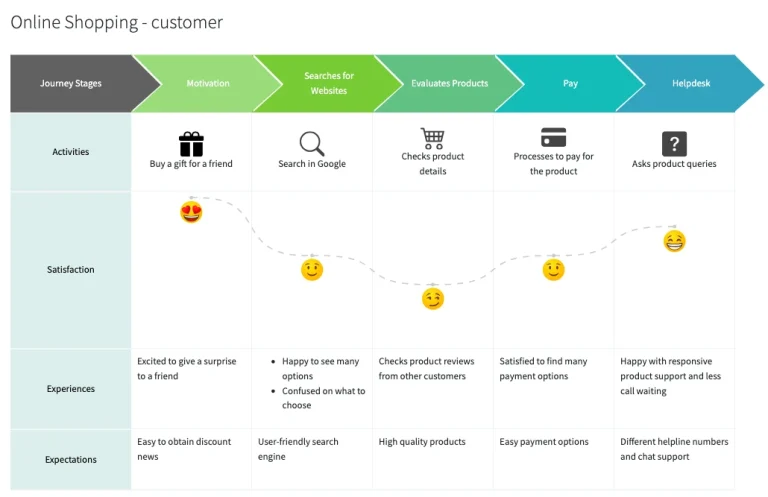
Introduction
In the ever-evolving world of search engine optimization (SEO), one of the most overlooked yet powerful tools is the title tag and meta description. These two elements serve as the first impression a user has of your website when they encounter it in search results. In 2024, with Google’s evolving algorithms and increased competition for attention, optimizing these elements can make the difference between a high click-through rate (CTR) and a missed opportunity.
This article will guide you through the essential strategies for crafting compelling title tags and meta descriptions that not only improve your SEO performance but also drive more traffic to your site. Whether you’re a seasoned marketer or just starting out, understanding how to optimize these elements is crucial for success in today’s digital landscape.
What Are Title Tags and Meta Descriptions and Why They Matter
Title Tags: The First Impression
A title tag is an HTML element that defines the title of a web page. It appears in three key places:
- Search Engine Results Pages (SERPs) – as the clickable headline.
- Browser Tabs – as the title of the page.
- Social Media Posts – as the title of the shared link.
The primary role of a title tag is to communicate what the page is about to both users and search engines. It’s often the first thing a user sees when searching for information, making it a critical factor in determining whether they click on your link.
Meta Descriptions: The Second Chance
A meta description is a brief summary of a web page’s content that appears beneath the title tag in SERPs. While not a direct ranking factor, it plays a vital role in influencing CTR by providing a clear and enticing preview of what the page offers.
Together, title tags and meta descriptions act as the “ad copy” for your website in the search results. A well-crafted pair can significantly boost your visibility and engagement, while a poorly optimized one can lead to lost opportunities.
How Title Tags and Meta Descriptions Impact SEO Performance
Influence on Click-Through Rates (CTR)
Even if your page ranks highly in search results, a weak title tag or meta description can prevent users from clicking through. According to research, pages with strong, relevant title tags and meta descriptions tend to have higher CTRs, which can positively impact your rankings over time.
Connection to User Intent and Search Relevance
Google prioritizes content that aligns with user intent. By optimizing your title tags and meta descriptions to match common search queries, you increase the likelihood that your page will be seen as relevant and useful.
For example, if a user searches for “how to write a meta description,” your title tag should reflect that intent clearly, and your meta description should provide a concise answer to their question.
Role in E-E-A-T (Experience, Expertise, Authoritativeness, Trustworthiness)
While not directly tied to E-E-A-T, well-optimized title tags and meta descriptions contribute to a better user experience. When users see clear, accurate, and valuable information in the search results, they are more likely to trust your site and engage with your content.
Step-by-Step Implementation Framework
1. Define or Audit the Current Situation
Before making any changes, take stock of your current title tags and meta descriptions. Use tools like Screaming Frog, Ahrefs, or Google Search Console to analyze your existing content. Look for:
- Duplicate or generic titles
- Missing keywords
- Overly long or truncated tags
- Lack of clarity or appeal
This audit will help you identify areas for improvement and set a baseline for measuring your progress.
2. Apply Tools, Methods, or Tactics
Once you understand where you stand, apply the following techniques:
Optimize for Length
- Title Tags: Keep them between 50–60 characters to avoid truncation, especially on mobile devices.
- Meta Descriptions: Aim for 150–160 characters to ensure full visibility.
Include Target Keywords
- Place your main keyword near the beginning of your title tag and include it naturally in your meta description.
- Avoid keyword stuffing; focus on relevance and readability.
Add Value and Emotion
- Use power words like “ultimate,” “beginner’s guide,” or “expert tips” to grab attention.
- Highlight benefits, such as “Save 20% on your next purchase” or “Learn the secrets of top marketers.”
Use Special Characters and Formatting
- Brackets, exclamation points, and hyphens can make your titles stand out in a crowded SERP.
Test and Refine
- Use A/B testing tools like Google Optimize or HubSpot to experiment with different variations of your title tags and meta descriptions.
- Monitor CTR and adjust based on performance data.
3. Measure, Analyze, and Optimize
After implementing your optimized title tags and meta descriptions, track their performance using analytics tools like Google Analytics or SEMrush. Key metrics to watch include:
- Click-Through Rate (CTR)
- Bounce Rate
- Time on Page
Use this data to refine your strategy and continue improving your content over time.
Real or Hypothetical Case Study
Let’s look at a hypothetical case study of a small e-commerce business that sells organic skincare products.
Before Optimization:
– Title Tag: “Skincare Products”
– Meta Description: “Shop our wide range of skincare products.”
After Optimization:
– Title Tag: “Organic Skincare Products for Radiant Skin | [Brand Name]”
– Meta Description: “Discover natural, cruelty-free skincare products that deliver visible results. Shop now and enjoy free shipping!”
Results:
– CTR increased by 35%
– Bounce rate decreased by 20%
– Sales grew by 18% within three months
This example shows how even small changes to title tags and meta descriptions can have a significant impact on user behavior and business outcomes.
Tools and Techniques for Optimizing Title Tags and Meta Descriptions
Here are some of the best tools to help you create effective title tags and meta descriptions:
- Yoast SEO – A WordPress plugin that provides real-time feedback on your title tags and meta descriptions.
- Moz Pro – Offers insights into keyword opportunities and helps you optimize your content for search.
- SEMrush – Allows you to analyze competitors’ titles and meta descriptions for inspiration.
- Google Search Console – Helps you monitor your site’s performance and identify issues with your tags.
- SurferSEO – Uses AI to suggest optimal keyword placement and structure for your content.
Each of these tools can help you streamline the optimization process and ensure your content is as effective as possible.
Future Trends and AI Implications
As AI continues to shape the future of SEO, the importance of title tags and meta descriptions will only grow. With the rise of voice search, visual search, and multimodal content, users are looking for more personalized and engaging experiences.
AI-powered tools like Google’s Gemini or Bing’s new AI features may soon allow for dynamic title tags and meta descriptions that adapt based on user behavior and context. This means that future SEO strategies will need to be more flexible and responsive than ever before.
To stay ahead, focus on creating content that resonates with your audience, and use AI tools to enhance your optimization efforts. The goal is to create a seamless, engaging experience that keeps users coming back.
Key Takeaways
- Title tags and meta descriptions are critical for driving CTR and improving SEO performance.
- Optimize for length, relevance, and keyword inclusion to maximize visibility.
- Use emotional triggers, power words, and special characters to stand out in the SERP.
- Test and refine your tags regularly to improve performance.
- Stay ahead of the curve by embracing AI and adapting to new search trends.
By mastering the art of title tag and meta description optimization, you’ll not only improve your rankings but also create a better user experience that drives real results.
Meta Title: How to Optimize Title Tags & Meta Descriptions for Higher CTR in 2024
Meta Description: Learn how to craft compelling title tags and meta descriptions that boost your CTR and improve SEO performance in 2024.
SEO Tags (5): title tags, meta descriptions, CTR optimization, SEO strategies, on-page SEO
Internal Link Suggestions:
– [Parameter #1]: On-Page SEO Best Practices
– [Parameter #2]: Keyword Research for SEO
– [Parameter #3]: Content Marketing Strategies
External Source Suggestions:
– https://moz.com/learn-seo/meta-tags
– https://www.searchenginejournal.com/seo-title-tag/
– https://ahrefs.com/blog/meta-description/











